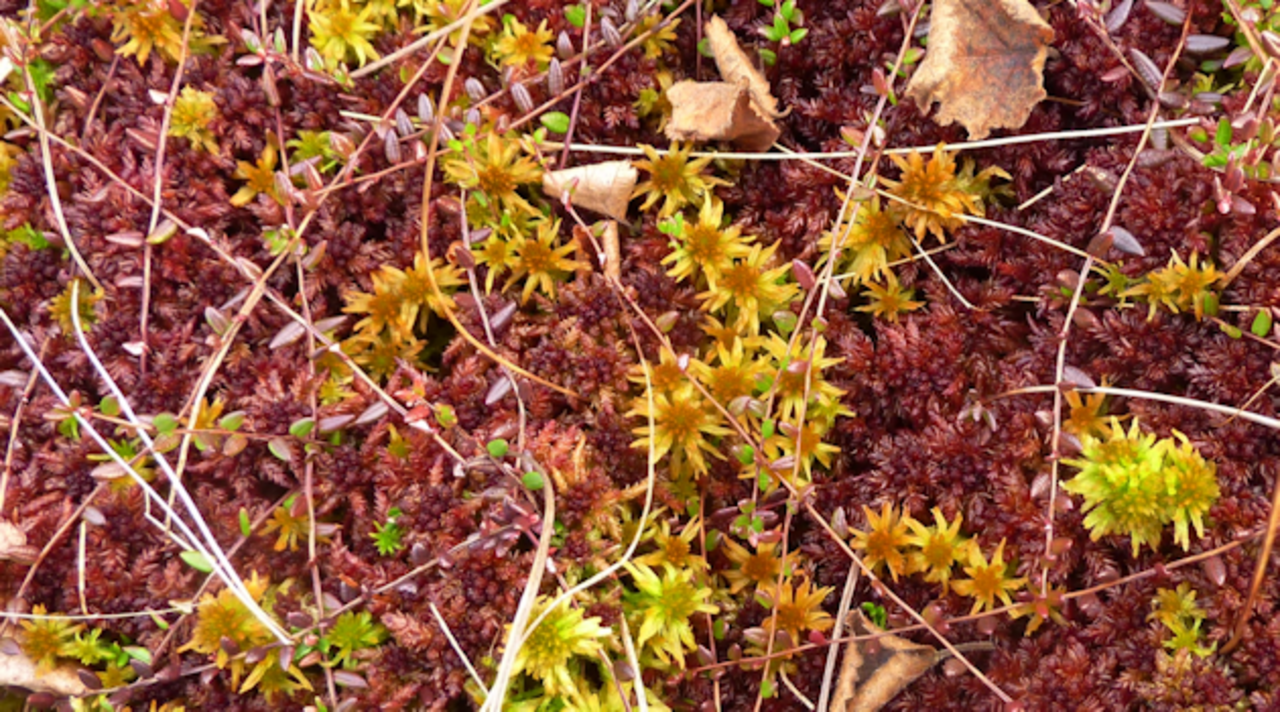Project
Sphagnum Farming: Effects on biodiversity and climate protection

Sphagnum farming following peat extraction in Lower Saxony: Effects on biodiversity and climate protection
What are the effects of Sphagnum farming on biodiversity and climate protection?
Background and Objective
Peatlands drained for agriculture, forestry and peat extraction are a major source of greenhouse gas emissions. Therefore, sustainable utilisation systems are sought, which offer habitats for typical flora and fauna and have a long-term greenhouse gas balance similar to near-natural peatlands. At present, Sphagnum farming, i.e. the cultivation of peat mosses as a substrate for horticulture, is the only utilisation option of bogs which might combine ecological and economic goals.
The aim of our research project is the scientific evaluation of the commercial use of Sphagnum cultivation fields. The focus will be on biodiversity and greenhouse gas exchange. The project is comprised of the two projects “Großflächige Torfmooskultivierung in Niedersachsen als Folgenutzung nach Schwarztorf-Abbau und ihr Potenzial für Klimaschutz und Biodiversität (KlimDivMoos)“ and “Auswirkungen großflächiger Torfmooskultivierung nach Schwarztorf-Abbau auf Biodiversität und Treibhausgasemissionen (MOOSKULT)“. KlimDivMoos (01.09.2015 until 31.12.2018) and MOOKULT (01.10.2016 until 30.09.2019) are funded by the Lower Saxony Ministry of Food, Agriculture, and Consumer Protection and by the German Federal Environmental Foundation (DBU), respectively.
Approach
Sphagnum farming depends on donor areas and an effective water management. Therefore, we will evaluate not only commercially used cultivation fields, but also a donor mire and propagation areas. The Leibniz University Hannover (Institute for Landscape Planning) will investigate the effects of moss “harvest” on the donor mire and the biodiversity (flora and fauna) of the propagation area and cultivation fields.
The Thünen-Team is responsible for the measurement of greenhouse gas exchange. Using manual chambers, we will quantify the exchange of carbon dioxide (net ecosystem exchange), nitrous oxide and methane from the donor mire, the propagation area (including irrigation polders) and the cultivation fields. Using “Open Top Chambers”, we will test the resilience of different water management systems against increased temperatures. Furthermore, we will conduct an isotope study in the Sphagnum cultivation field to trace the newly sequestered carbon.
Our Research Questions
- What is the greenhouse balance of the “peatland-based” production of Sphagnum substrates (donor mires, propagation areas, and cultivation fields)?
- Which is the best irrigation method for optimizing the greenhouse gas balance?
- How resilient towards increased temperatures is Sphagnum cultivation compared to a semi-natural mire?
- Is there enough carbon dioxide sequestration to allow for peat growth despite Sphagnum harvest?
Thünen-Contact

Involved Thünen-Partners
Involved external Thünen-Partners
- Leibniz Universität Hannover
(Hannover, Deutschland) -
Klasmann-Deilmann GmbH
(Geeste, Deutschland)
Funding Body
-
Bundesland Niedersachsen
(national, öffentlich) -
German Federal Environmental Foundation (DBU)
(national, öffentlich)
Duration
9.2015 - 3.2021
More Information
Project status:
finished
Publications
- 0
Oestmann J, Piayda A, Düvel D, Tiemeyer B (2024) Short-term carbon cycling at a Sphagnum farming site under drought stress. Soil Biol Biochem 191:109346, DOI:10.1016/j.soilbio.2024.109346
- 1
Oestmann J, Dettmann U, Düvel D, Tiemeyer B (2022) Experimental warming increased greenhouse gas emissions of a near-natural peatland and Sphagnum farming sites. Plant Soil 480:85-104, DOI:10.1007/s11104-022-05561-8
- 2
Oestmann J, Tiemeyer B, Düvel D, Grobe A, Dettmann U (2022) Greenhouse gas balance of Sphagnum farming on highly decomposed peat at former peat extraction sites. Ecosystems 25(2):350-371, DOI:10.1007/s10021-021-00659-z
- 3
Tiemeyer B, Oestmann J, Düvel D, Piayda A, Dettmann U (2022) Potential for emission mitigation by Sphagnum farming on highly decomposed peat. Braunschweig: Thünen Institute of Climate-Smart Agriculture, 1 p, Project Brief Thünen Inst 2022/45a, DOI:10.3220/PB1669649721000
- 4
Tiemeyer B, Oestmann J, Düvel D, Piayda A, Dettmann U (2022) Potenzial der Torfmooskultivierung auf Schwarztorf für den Klimaschutz. Braunschweig: Thünen-Institut für Agrarklimaschutz, 2 p, Project Brief Thünen Inst 2022/45, DOI:10.3220/PB1669649354000
- 5
Grobe A, Tiemeyer B, Graf M (2021) Recommendations for successful establishment of Sphagnum farming on shallow highly decomposed peat [online]. Mires Peat 27:27, zu finden in <http://mires-and-peat.net/modules/download_gallery/dlc.php?file=413&id=1635443853> [zitiert am 01.11.2021], DOI:10.19189/MaP.2020.APG.StA.2022
- 6
Reich M, Zoch L, Grobe A, Tiemeyer B, Oestmann J (2019) "Auswirkungen großflächiger Torfmooskultivierung nach Schwarztorf-Abbau auf Biodiversität und Treibhausgasfreisetzung" : Abschlussbericht 2019 [online]. Niedersächsisches Ministerium für Ernährung, Landwirtschaft und Verbraucherschutz ; Deutsche Bundesstiftung Umwelt, 87 p, zu finden in <https://www.dbu.de/OPAC/ab/DBU-Abschlussbericht-AZ-33305_01-Hauptbericht.pdf> [zitiert am 09.06.2020]
- 7
Gaudig G, Krebs M, Prager A, Wichmann S, Barney M, Caporn SJM, Emmel M, Fritz C, Graf M, Grobe A, Gutierrez Pacheco S, Hogue-Hugron S, Holzträger S, Irrgang S, Kämäräinen A, Karofeld E, Koch G, Koebbing JF, Kumar S, Oestmann J, et al (2018) Sphagnum farming from species selection to the production of growing media: a review [online]. Mires Peat 20:13, zu finden in <http://mires-and-peat.net/modules/download_gallery/dlc.php?file=273&id=1558883733> [zitiert am 28.08.2018], DOI:10.19189/MaP.2018.OMB.340
- 8
Graf M, Bredemeier B, Grobe A, Köbbing JF, Lemmer M, Oestmann J, Rammes D, Reich M, Schmilewski G, Tiemeyer B, Zoch L (2017) Torfmooskultivierung auf Schwarztorf: ein neues Forschungsprojekt in Niedersachsen. Telma 47:109-128

![[Translate to English:] [Translate to English:]](/media/_processed_/6/4/csm_titel_CO2Kampagne8_afeea2273e.png)
![[Translate to English:] [Translate to English:]](/media/_processed_/4/1/csm_titel_93px_CO2Kampagne8_9b0f3354d4.png)





